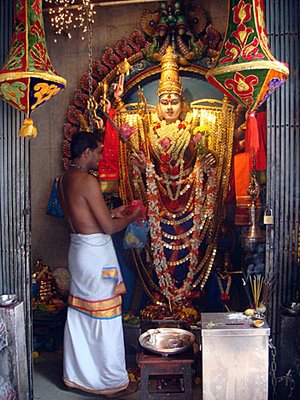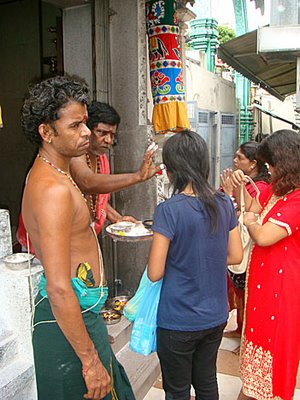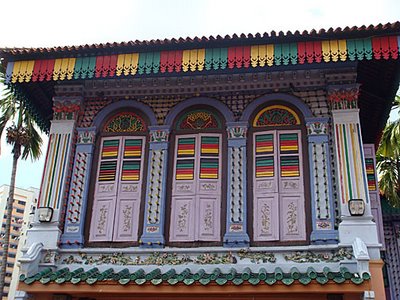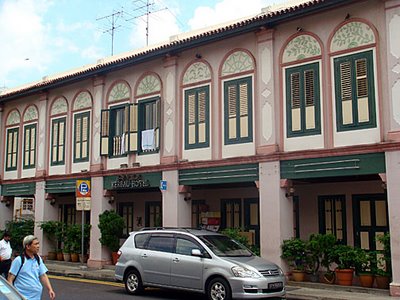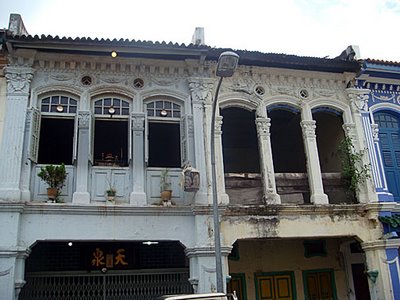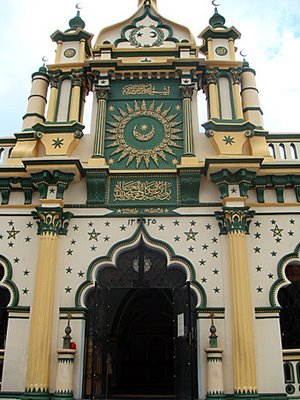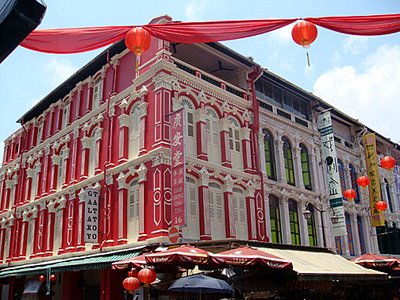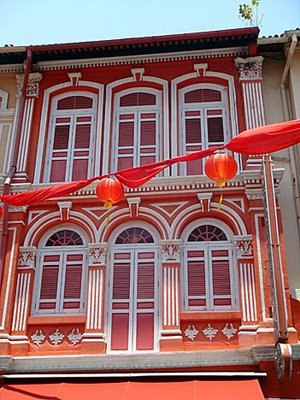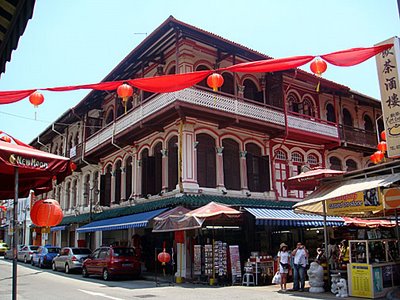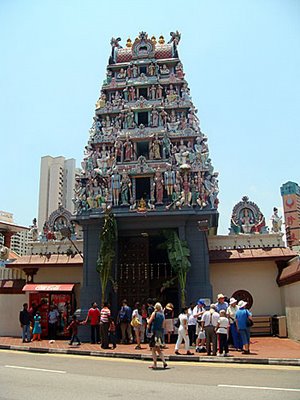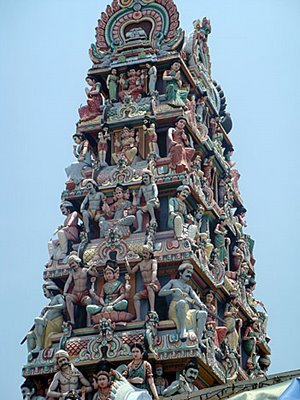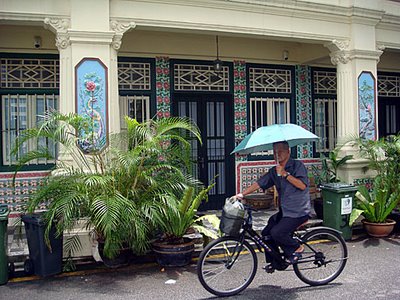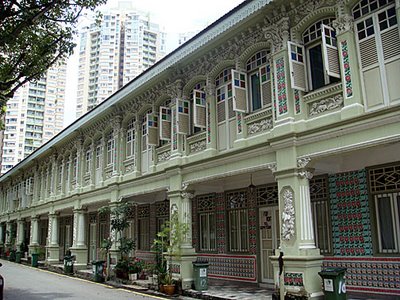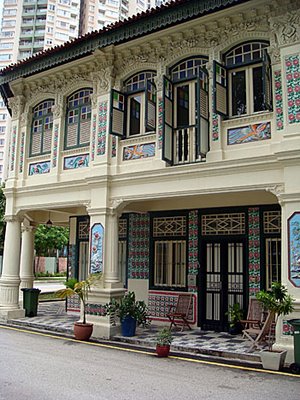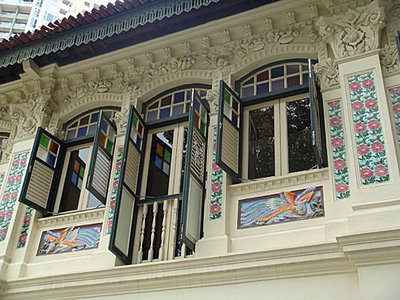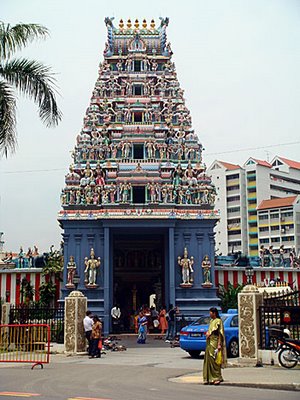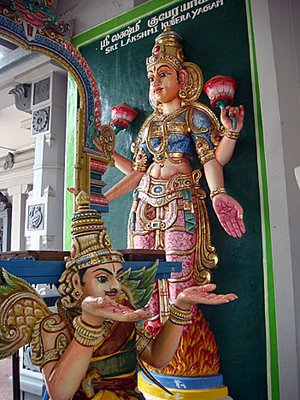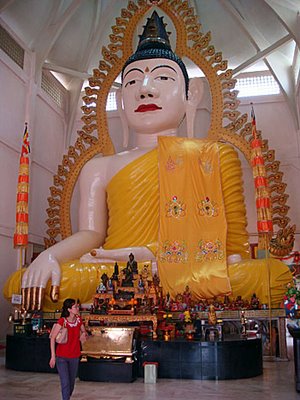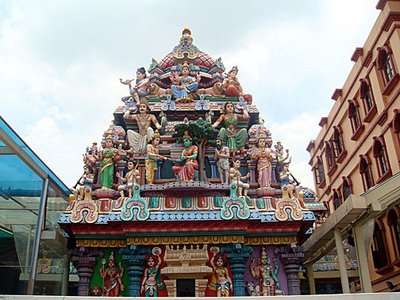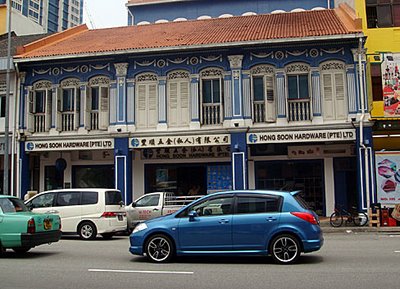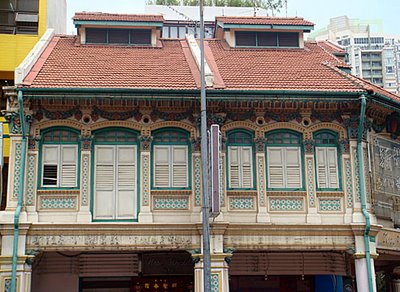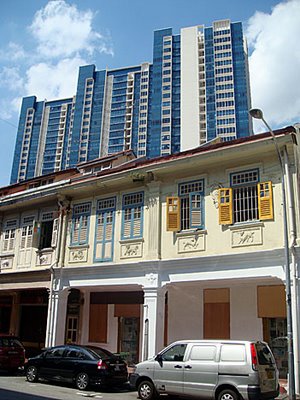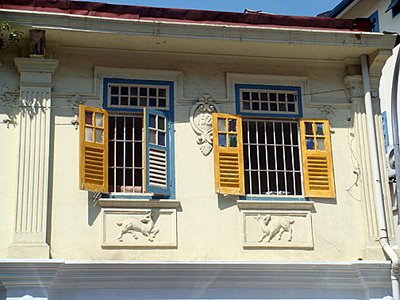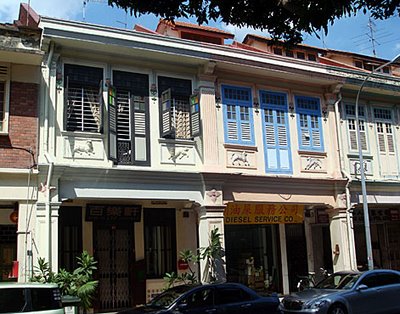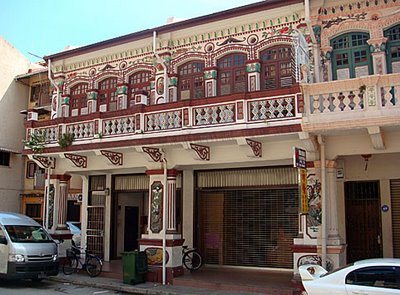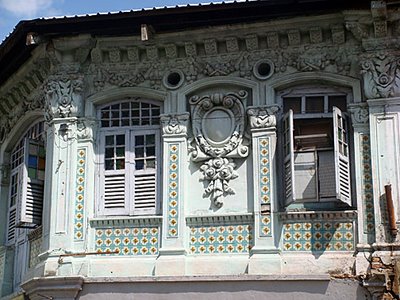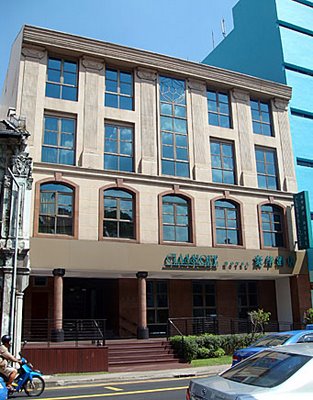Temples... what else do you expect?
Although I kept out of the sun as much as possible, I went on a walkabout of Little India today as well as popping over to Chinatown on the MRT train system just to get a few hours of sightseeing under my belt. My skin was looking considerably better, people weren't staring at me anymore and so I felt more comfortable than I have been for quite a few weeks. It's back to see the doctor tomorrow morning, but in the meantime it was out and about whilst still taking it easy and leisurely. First on my viewing list was the Hindu temple of Sri Veeramakaliamman and I walked smack bang into a ceremony with clashing cymbals and loud music accompanying a line of temple devotees performing a symbolic parade much to the delight of the hordes of followers packed into the courtyard. The temple is dedicated to the Goddess of Power, Kali and was built as early as 1855. There was so much going on at the same time it was hard to keep track of everything. Pressing on, I had a look at the shophouses along Dunlop Street before a quick visit to the Masjid Abdul Gafoor mosque, built in 1907 with a unique sundial on its entrance, the only one in the Islamic world dedicated to 25 chosen prophets.
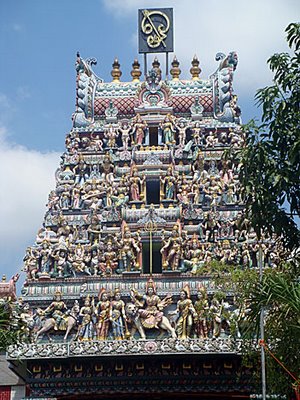 The gopuram entrance way to the Sri Veeramakaliamman temple, dedicated to the goddess Kali, located on Serangoon Road
The gopuram entrance way to the Sri Veeramakaliamman temple, dedicated to the goddess Kali, located on Serangoon Road
A quick ride south on the MRT train and I got off at Chinatown, popped into MacDonalds for a bite to eat and then headed along the lantern-decorated Temple Street with its strikingly-painted 3-storey shophouses before visiting the oldest Hindu temple in the city, the Sri Mariamman, originally built in 1827. By comparison to the first Hindu temple today, this was as quiet as a mouse and the only one where they expected you to pay for your camera. Chinatown was much more overtly commercial than Little India, and a lot more colourful. The Chinatown Heritage Centre (cost: 10 Singapore dollars) was well worth it for a real insight into the birth of, and daily life in the Chinese area of the city through the ages. I'm still under doctor's orders so I took the MRT back to my hotel for some rest and to post this blog. By the way, so far the MRT prices work out at a little over a single Singapore dollar, cheap, clean and very convenient. Would I want to live here, no thanks, way too busy, way too developed, way too organised and no-one looks anyone else in the eye, they're all too busy and pre-occupied with their lives. And I was told off for taking a swig from my bottle of water whilst waiting for the train to arrive - honest!
 The gopuram entrance way to the Sri Veeramakaliamman temple, dedicated to the goddess Kali, located on Serangoon Road
The gopuram entrance way to the Sri Veeramakaliamman temple, dedicated to the goddess Kali, located on Serangoon Road Labels: Chinatown, Little India, Singapore
